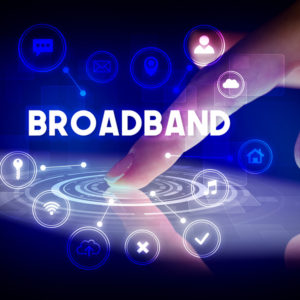The COVID-19 pandemic highlights the need for all Americans to have access to fast and reliable broadband internet. Their businesses, educations and sometimes even lives depend upon it — whether they’re in urban centers or rural communities.
While broadband is available in 95 percent of homes in the United States, only 73 percent of them actually subscribe. A 2017 Commerce Department study found that most broadband non-subscribers simply don’t see the importance of the internet in their daily lives, and therefore choose not to buy it.
In rural areas, however, about 22 percent of residents can’t access wireline broadband — in large part because it’s so costly to build wired networks to sparsely populated communities. Past efforts at extending broadband failed because of waste and political patronage.
For their part, America’s internet providers teamed with federal, state and local authorities during the pandemic to expand internet access to disadvantaged communities. Leading providers like Comcast, Charter and Cox have provided free and subsidized services to low-income families and students to help them stay online.
In the long term, efforts to close the digital divide require greater broadband adoption in the homes that have access — and deployment to the homes that don’t have it. To get the deployment job done, we need to clear out the regulatory underbrush and political patronage that caused past efforts to fail.
One legacy regulation, in particular, undermines efforts to bring broadband to more remote regions of the country. It stems from Congress’s 1996 Telecommunications Act and requires companies applying for federal funds to be designated as “eligible telecommunications carriers,” or ETCs, by state commissions.
Government initiatives to narrow the digital divide, such as the Universal Services Fund and the Rural Digital Opportunity Fund, are only available to companies that have acquired ETC status.
And while these gatekeeper rules may have had some rationale in the 1990s — primarily to make sure taxpayer dollars weren’t risked with fly-by-night infrastructure builders — today those rules impede the twin goals of rapid universal broadband and taxpayer protection.
Rather than keeping out the unqualified, the rules have instead become a regulatory hammer of special interests — mostly local incumbent companies — to keep out competitors and thereby increase the cost to taxpayers of building networks. ETC has become, well, sort of an ol’ boys club.
One of the ways ETC requirements keep out competitors is by choking them with red tape. Getting the ETC designations often involve never-ending, resource-intensive, regulatory black holes in many jurisdictions.
Designations come with endless regulatory and litigation risks linked to varying state-based telecom regulations. Because the larger, most capable broadband network providers often operate across state boundaries, moreover, those companies must jump through hoops and navigate conflicting rules in multiple jurisdictions.
In California for example, companies may be required to meet network resiliency standards that are often technologically, logistically and financially unreasonable. That includes complying with arbitrary and unreasonable mandates — deploying generators at power-supply stations and essentially serving as stand-in electrical utilities for local communities, even though the companies have little experience in doing so.
Many competitors end up just throwing up their hands and giving up — which is what the incumbent backers of the ETC system intended all along.
If the United States is going to achieve reliable universal access to broadband, then we need national reform to recruit the best providers to rapidly deploy networks in unserved communities. And we need to do that cost-effectively through open competition.
The FCC already has comprehensive national requirements for broadband providers bidding for federal contracts and for everything from rural call completion to emergency 911 calls. Additionally, some state and local bodies run their own broadband-funding programs without the anticompetitive bureaucracy.
What’s needed now is a single, uniform set of federal rules that ensure broadband infrastructure companies are doing what they need to: building the best networks, in the most cost-effective manner, to communities that don’t have broadband infrastructure.
Barring a compelling taxpayer-protection rationale, state commissions should be stopped from imposing extraneous patronage requirements to favor local incumbents.
Competitive carriers also shouldn’t be forced into a Hobson’s choice of having to accept the scarlet letter of the outdated “common carrier” classification of the old telephone monopolies of the 1930s. Those anachronisms only open up a wide range of other regulatory burdens and obligations on companies, instead of enabling them to focus on the imperative to get more people connected.
Accomplishing universal broadband in a way that protects taxpayers requires smart, pro-competition practices that screen-in the most capable bidders. Past deployment efforts failed because we didn’t get that mix right.
Given that insight, and the urgent need, there’s no excuse for failing this time.

